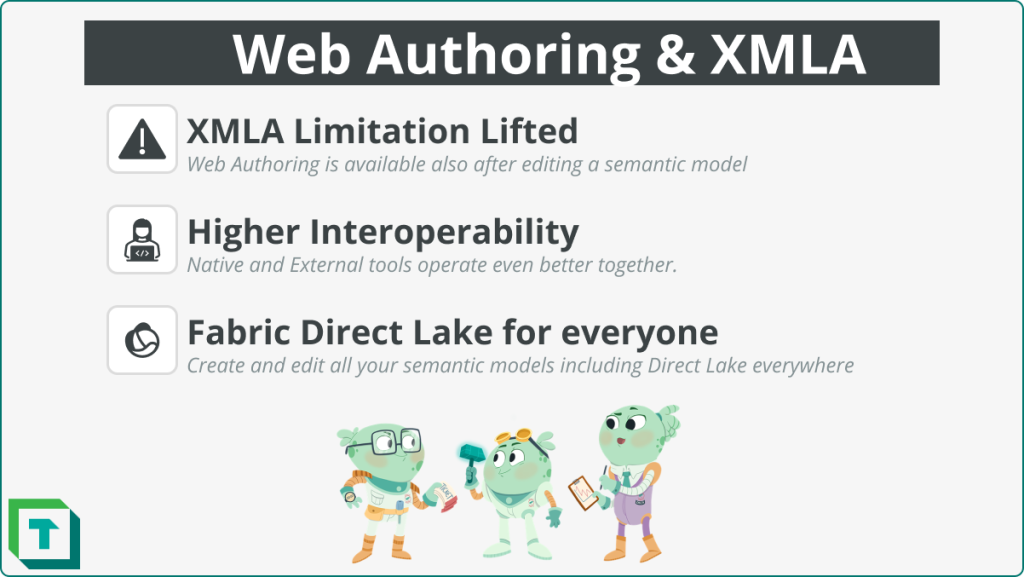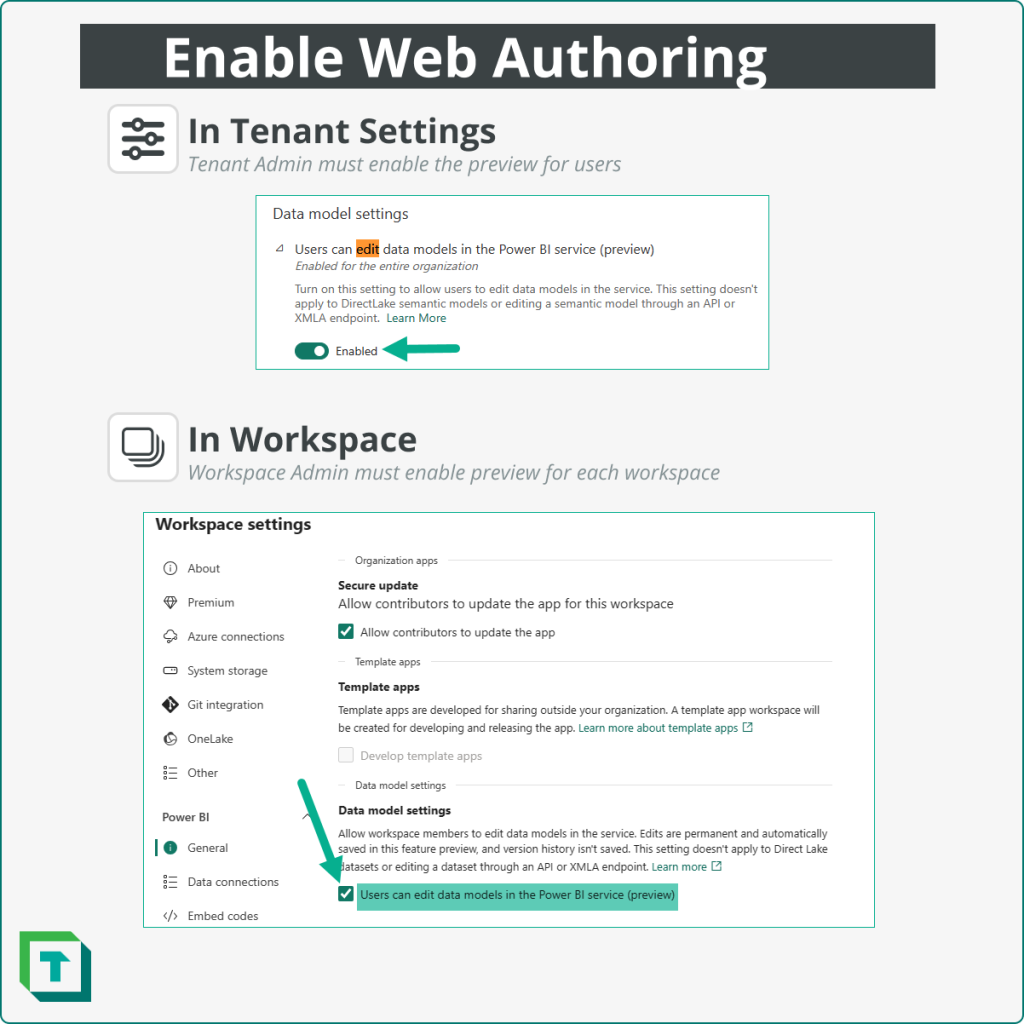Editing through XMLA endpoint no longer disables web authoring of semantic models.
Little under a year ago Microsoft introduced web authoring of semantic models in Power BI (Now Fabric). However, one of the limitations was that once you edited the model with an external tool through the XMLA endpoint, web editing of that model would no longer be available. This limitation became a bigger pain point when Fabric introduced Direct Lake models as they are only created and edited in either the service or through XMLA endpoints – which meant you had to make a choice. But now you don’t!

We, at Tabular Editor, are very glad to hear that Microsoft has made an update to Fabric that now allows for XMLA edited models to still be available for web editing!
No more lock in
The unfortunate truth was that until now using Tabular Editor, would lock a user to continue using XMLA endpoint tools to edit semantic models. We are at Tabular Editor very pleased that this is no longer the case and that the Power BI service now offers a unified experience for developing semantic models.
Tabular Editor and Web authoring: Better together
There are several scenarios where the combination of Tabular Editor and Web authoring elevates each other to help with workflows and development for Power BI developers.
- Allows for switching between development tools.
Web authoring combined with Tabular Editor allows for developers to use the development tool of their preference while still being able to switch and allowing for other developers with other preferences to take over the development of a model. Semantic model web authoring allows users who are more comfortable with the Power BI modelling experience to make changes to published models in the Power BI or Fabric service.
- Create Direct Lakes in Fabric, continue in Tabular Editor you can always go back
Fabric’s newest semantic model type can only be created through the Web UI or through a XMLA endpoint with e.g. Tabular Editor. The limitation of having to make a choice where to edit a Direct Lake model was a real issue for many new Fabric users. That this limitation is lifted will hopefully mean that Fabric users are more comfortable to embrace Direct Lake models in the future as the Microsoft native authoring experience will always be available even when the model has been created in Tabular Editor.
- Conducting audits and assistance on self-service models
In self-service scenarios it is common for business users to developer their own semantic models along with their reports. With the XMLA web authoring restriction lifted Center of Excellence (CoE) developers can now safely conduct audits using XMLA based tool of self-service models without having to worry about blocking web authoring for the self-service business developer.
Ensure Web Authoring is enabled
For web authoring to be available on semantic models two settings must be enabled.
First, a tenant admin must in the Admin portal enable the tenant setting “Users can edit data models in the Power BI service” for the users that needs to use this preview feature. Secondly, on each workspace where developers wish to edit through the Fabric web UI a workspace admin must enable the preview in workspace settings -> Power BI -> General.

Conclusion
The reuse of semantic models is an integral part to any Power BI enterprise setup as it helps team collaboration and to promote a single version of the model than can be used across reports. Having interoperability between model authoring tools ensures that developers do not have to make choices that lock them and their company into a specific development tool.